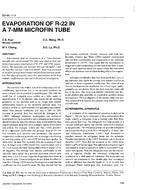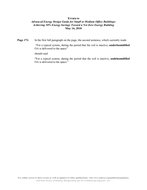Maintaining relative humidity in the range of 30% to 60% in buildings results in many advantages, such as improved comfort and reduced health risks. However, for residences in humid environments, it is difficult to maintain these conditions all year. Several passive strategies involving modifications of the moisture capacitance and transmittance of the building envelope, coupled with conventional air-conditioning equipment, are investigated to reduce interior humidity levels. A parametric study is conducted for a typical residence in Austin, Texas, using FSEC 3.0, a building simulation program. The conclusion is that none of the passive strategies provides a comprehensive, year-round solution to elevated indoor humidity conditions. However, the addition of a separately controlled vapour-compression ventilation system (controlled by a humidistat) for the conditioning of outside air can provide improved indoor air quality and may lower peak electric demand for residential air-conditioning during the cooling season.
KEYWORDS: calculating, controls, humidity, housing, tropics, relative humidity, buildings, passive, moisture, capacitance, transmittance, air conditioning, indoor, computer programs, compression refrigeration, ventilation, air quality, indoor, humidistats, unit air conditioners, materials, properties
Citation: ASHRAE Trans. 1994, Vol.100, Part 2, Paper number 3790, 59-73, 12 figs., 2 tabs., refs.
Product Details
- Published:
- 1994
- File Size:
- 1 file , 1.5 MB
- Product Code(s):
- D-17369


